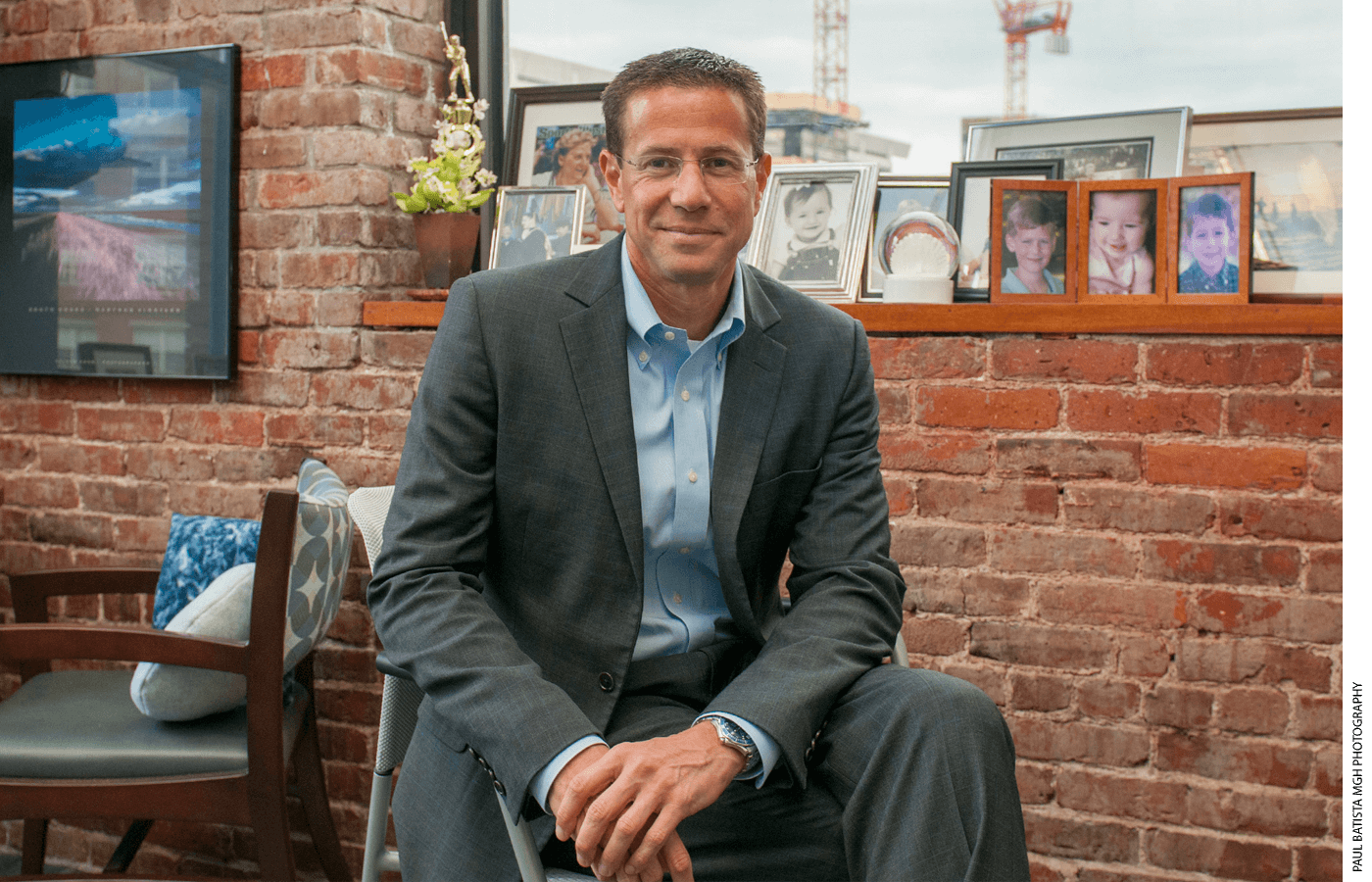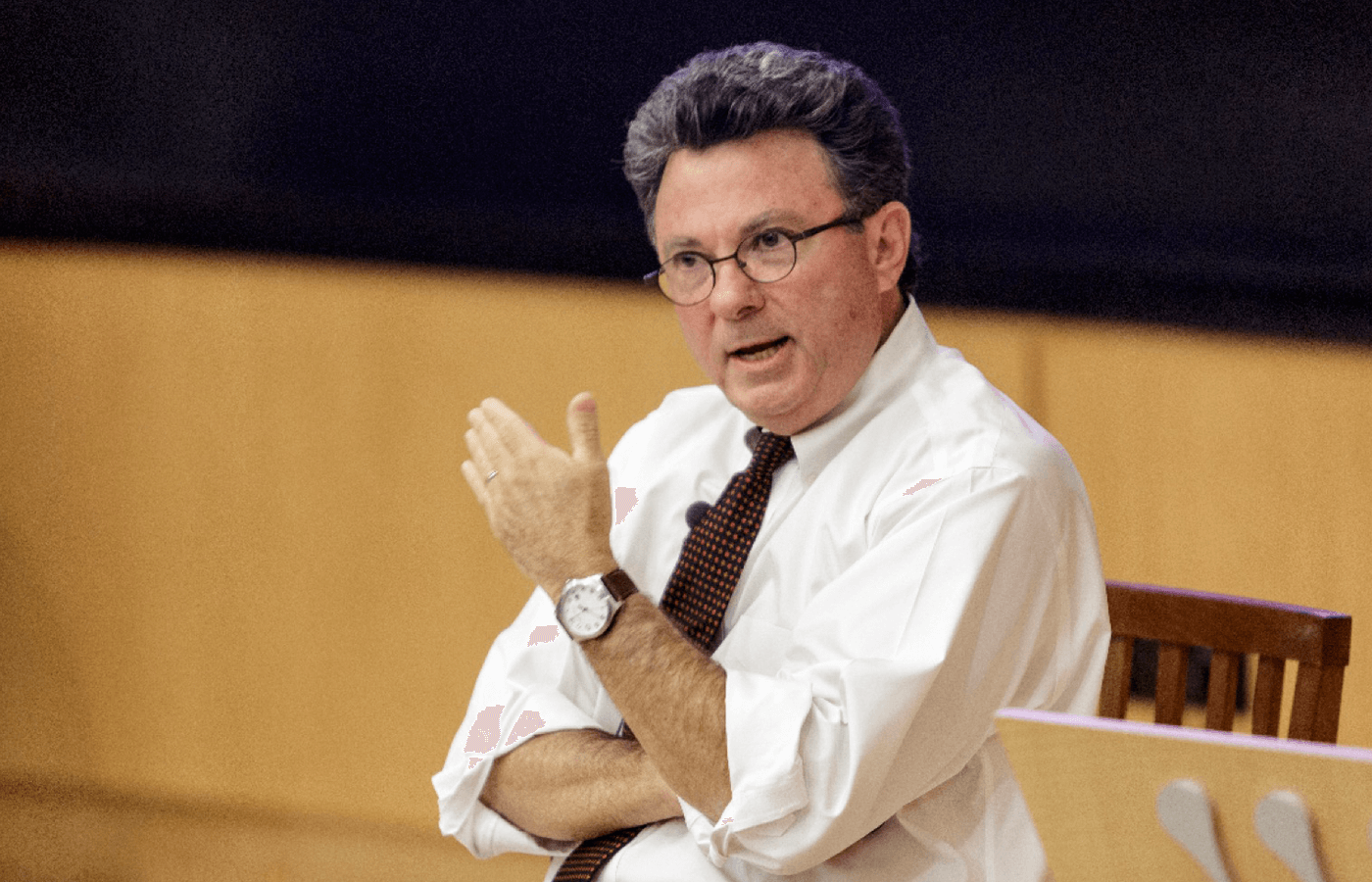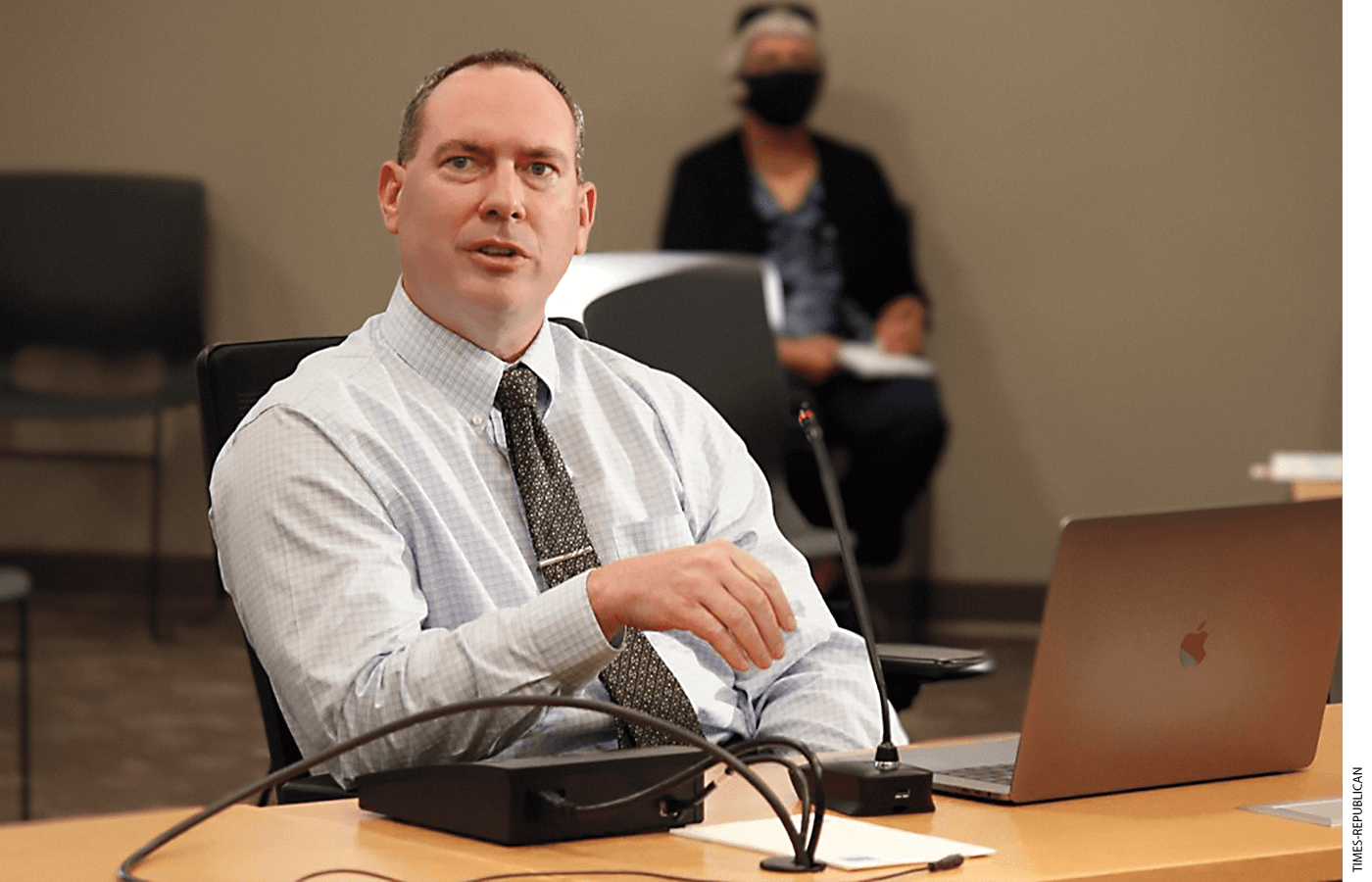
Ten minutes after class starts, a student flings open the door, struts in, and yells, “What’s up, bitches?”
If this kind of conduct is familiar to you, you don’t need a primer on how behavior has become worse—much worse—since students returned to school post-pandemic. Chances are you’ve observed just what the data from the National Center for Education Statistics report: 84 percent of school leaders say student behavioral development has been negatively impacted. This is evident in a dramatic increase in classroom disruptions, ranging from student misconduct to acts of disrespect toward teachers and staff to the prohibited use of electronic devices.
Bad behavior “continues to escalate,” said Matt Cretsinger, director of special services for the Marshalltown Community School District in Iowa. “There are more behavioral needs than we’ve ever seen. . . . It’s a shock to teachers.”
Student behavior is “definitely worse” post-pandemic, said Mona Delahooke, a pediatric psychologist. “There are much heavier stress loads that teachers and students are carrying around.”
And it’s not as if discipline weren’t a problem pre-pandemic. “The numbers tell the story,” said student-behavior specialist Ross Greene. “We’re suspending kids like there’s no tomorrow; we’re giving detentions even more than that. We’re expelling to the tune of 100,000 students a year.” Greene added that corporal punishment is at 100,000 instances a year, restraint or seclusion is close to that, and school arrests tally more than 50,000 a year.
Through the nonprofit organization he founded in 2009, Lives in the Balance, Greene and his colleagues train schools in his Collaborative & Proactive Solutions model and advocate for the elimination of punitive, exclusionary disciplinary practices in schools and treatment facilities.
In a small but growing number of schools, teachers and administrators are drawing on Greene’s advice to change how they handle misbehavior. Pointing to hundreds of research studies that say students who respond poorly to problems and frustrations are lacking skills, these schools are actively looking to end punitive discipline, take the focus off student behavior, and train their staffs to recognize—and avoid—situations likely to cause bad behavior. If something is triggering outbursts from students—simply asking them to sit quietly at their desks or giving them a surprise quiz, for instance—teachers might be better off finding other ways to accomplish what is needed.
Not blaming children for their outbursts requires a paradigm shift that, according to some practitioners, is long overdue.
Stuart Ablon, the founder and director of Think:Kids in Massachusetts General Hospital’s department of psychiatry, said simply, “We must move away from thinking students do well if they want to, to students do well if they can.”
Delahooke has her own go-to phrase: “Children don’t throw tantrums; tantrums throw children.”
And Robert Sapolsky, a noted neuroendocrinology researcher and Stanford University professor, goes even further when he traces how various factors—ranging from neurons and hormones to evolution, culture, and history—factor into a person’s behaviors. “Biology is pretty much out of our control, and free will looks pretty suspect,” he said.

The Staying Power of Behaviorism
While these beliefs about student behavior and the growing number of schools adopting these disciplinary methods may seem new, leaders such as Ablon say they’ve been pushing this model for 30 years. And even though some schools are changing their practices, getting people to end their reliance on the punishments and rewards of behaviorism has proven difficult.
Behaviorism—the notion that behavior is shaped by conditioning via environmental stimuli (rewards and punishment)—was a popular theory in the early and mid-20th century. The irony, Ablon said, is that even when the idea was most in vogue, it was not effective. Punishment may put a stop to a certain behavior, but the effect is only temporary.
“It’s not only ineffective; it actually makes matters worse,” Ablon said.
A report that examined how discipline could alienate students from schools found that “when responses to student behavior fail to account for student perspectives and experiences, youths can experience feelings of alienation and disconnection.” Another study that looked specifically at why attempts to influence adolescent behavior often founder proposed the hypothesis “that traditional interventions fail when they do not align with adolescents’ enhanced desire to feel respected and be accorded status; however, interventions that do align with this desire can motivate internalized, positive behavior change.”
Part of the problem is that even when people agree that suspensions and other punishments aren’t working, they fall back on these patterns if they lack an alternative, according to Greene.
“The old mentality is dying hard,” Greene said. “People know a certain way of doing things. They have structures in place [that reinforce those practices]. You’ve got to replace what you’re doing with something; there can’t be a vacuum.”
“The research is pretty clear about what works and what doesn’t,” said Cretsinger. “There’s a significant delay between research and school practice.”
A 2021 study by the American Institutes for Research concluded that out-of-school suspensions for middle school students “actually had a negative effect on . . . students’ future behavioral incidents.” These students were also more likely to be suspended in the future, the study found.
While the study did not report the same effect for high school students, it did conclude that severely disciplining these older students “does not serve as a deterrent for future misbehavior.”
“Our educational system is in the dark ages when it comes to understanding behaviors,” said Delahooke. “That’s the bottom line.”

A Different Approach
That’s where this new strain of programs comes in. Greene is the originator of the Collaborative Problem Solving approach, but he now refers to his model as Collaborative & Proactive Solutions. The name change occurred when he left Massachusetts General Hospital. Since that time, the hospital has disseminated a variant of Greene’s original model under the name Collaborative Problem Solving without his consent. The hospital’s program is led by Greene’s former trainee, Ablon.
These programs began when their creators started looking at the causes of student misbehavior. Neuroscience “understands that humans are driven by a subconscious [need] to feel safe,” said Delahooke. “When we see big behavioral problems such as kids kicking, screaming, running around, those behaviors we’re viewing as stress responses, not attention-seeking.”
The causes of misbehavior, Greene said, stem from weaknesses in one of four areas: flexibility and adaptability, frustration tolerance, problem-solving skills, and emotion regulation. During the remote-learning days of Covid-19, children missed the opportunity to build on these developmental skills, which led to more behavior challenges when they returned to school.
But exactly how does this knowledge of behavioral dynamics translate to the classroom? Let’s return to the example that began this story. Ablon used this event—the student bursting into class late and making a disruptive comment—to demonstrate how a teacher could respond to an incident. Ablon said this example described a student who was having a hard time shifting from A to B as she changed classes.
He suggested that instead of handing out an office referral or other punishment, the teacher should run through a three-point checklist. First, the teacher should try to empathize with the student. “I know empathy is becoming an endangered species,” but if teachers can externalize the problem from the child, they won’t see the student as the problem, he said.
Because this student is obviously not ready to learn, try to find out why they feel the way they do by asking questions, he added. You can even tell the student, “I know there must be an important reason you’re not sitting down and doing your work. So it’s okay.”
And because you can’t reason with a disregulated student, Ablon coaches staff not to force a behavior change on the student but instead to share their own perspective only after they understand the student’s viewpoint. The third step is for the teacher to assess the problem and see if they can brainstorm a solution with the student. (This step might well require that another staff member—perhaps an instructional aide—be available to keep the rest of the class on task, advocates say.)
Ablon cautions specifically against having a teacher or other staff member use power or control, because that will likely re-traumatize the student. You must give the student control, but not sole responsibility, he added.
Greene was clear that while school staff’s attitude toward punishment needs to change, they won’t achieve positive results unless they have a new structure to follow. Even though a lot of schools consider their policies to be “trauma-informed,” he said, many of them are still doling out suspensions and other punishments.
“I know changes have taken place when some things [in schools] are missing,” Greene said. When disciplinary tactics such as office referrals and suspensions are greatly reduced, he believes, it means the school has structured itself so those outcomes aren’t the default methods anymore. In these cases, school officials are no longer focusing on the behavior of students but rather on identifying the expectations that children are having a hard time meeting, he noted. And they are engaging with students to solve those disconnects.
Ablon said he knows these methods are gaining acceptance, because when he talks with school officials, he doesn’t have to spend most of his time convincing them that a different mindset is necessary. “There’s not as much resistance to knowing behavior is skill, not will.”
But even with more schools adopting this mindset, he said, the new approach to discipline will not become mainstream unless schools of education incorporate the methods into teacher preparation. Only when that occurs will schools no longer need to retrain staff, Ablon added.
Teachers, for their part, often ask how they and other staff will be able to find the time to implement these one-on-one practices, especially when the rest of the class is sidelined as a teacher focuses on understanding a single student’s behavior.
Greene said he’s seen assistant principals volunteer to cover a class for a teacher, understanding that better-behaved students will ultimately decrease the amount of time the principal spends meeting with children who have acted out.
Ablon pointed out that if a student is struggling behaviorally, that individual is very likely disrupting the learning of others already. “If teachers can’t find time for a one-on-one conversation, which they often can’t, then there is a more significant systemic issue at that school.”

Schools Seeing Results
While accepting these concepts is a step forward, putting the theories into action takes work. Schools implementing any model that adheres to these basics will need at least a year to train staff, allow them to practice the methods, and provide coaching on their efforts.
And it is key that the school doesn’t overload initiatives, trying to implement multiple large programs at once, Ablon said. “These aren’t quick answers. It’s not a 45-minute session and now you have everything you need. It takes trial and error, real buy-in from leaders, and funding” for training teachers and adding staff to oversee classrooms while professional development takes place.
Even within a given school district, one school can have a vastly different experience from the others. That’s what happened with Woodbury Elementary School in Matt Cretsinger’s Iowa district. While all 10 of Marshalltown’s schools had access to Ablon’s program, Woodbury principal Anel Garza championed the approach and made sure it was followed in everything the school did, including day-to-day activities, staff meetings, and even parent-teacher conferences.
Woodbury is a rural, dual-language school where many of the students are new to the U.S., Cretsinger said. Over the course of two years, office referrals decreased by 36.5 percent, while students with two or more referrals dropped 49 percent. Restraints and seclusion nearly disappeared, with only two incidents in a school of 400. In the rest of the district, office referrals rose 143 percent during the same time, and Cretsinger said that in the district’s annual state-of-the-schools survey, Woodbury saw a 10-point increase in school safety and student emotional safety while every other school in Marshalltown posted lower scores than in previous years.
“We’re not letting kids off expectations,” Cretsinger said. “We’re trying to figure out why it’s difficult to meet a goal rather than assuming and applying a consequence. The hardest thing for educators is to stop assuming. We’re trying to let [students] share their concerns before we share ours.”
Cretsinger said when staff pushes back on these theories, pointing out that they all grew up without this system, and they turned out fine, he challenges them.
“Did we really turn out all right?” he asks, pointing to today’s substance-abuse statistics and rampant mental health problems.
Even though the elementary school started showing results after one semester of using Ablon’s program, Cretsinger said there are still naysayers and principals from other schools in the district that have not bought in the way Woodbury did.

Teacher Resistance
Michael J. Petrilli, president of the Thomas B. Fordham Institute, said he’s not surprised some teachers have pushed back against these programs, because discipline and classroom management have long topped the list of reasons teachers give for leaving the profession. “It’s particularly frustrating if you feel principals don’t have your back,” he said.
Petrilli said that while he thought this system could work if implemented perfectly, in a typical school with typical leaders and teachers, “it’s not hard to imagine this doesn’t get implemented well and leads to greater frustration among teachers. . . . If you do this and it goes wrong, then that’s a big problem.
“If your goal is to better serve kids who are being disruptive, I totally get that, but what are the consequences for their peers in terms of learning time, feeling safe, and school culture? I have empathy [for children who are acting out], but you’ve got to worry about the other 24 kids, too.”
And what do teachers unions think of this potential sea change in classroom practice? While the National Education Association supports the implementation of various behavioral programs, Harry Lawson Jr., the organization’s director of human and civil rights, said union members have complained that schools don’t offer them the proper training to make this kind of shift.
“It creates another level of frustration [that teachers] are being asked to do one other thing,” he said. “It can often feel as though there’s no longer a way for me as an adult to hold a student accountable. . . . We still exist in a punishment-driven society. [Some teachers feel] if there’s a behavior, there should be accountability.”
Brian Joffe, the director of children’s programs for the School Superintendents Association, said that handling student misbehavior is “not that far off from parenting,” so it’s not surprising that while some teachers favor collaboration and positive environments, others “lean more toward respect and order.”
“What they’ve leaned on in the past—that lever is being taken away,” he said. “They wonder, ‘What will I do in the next situation?’”
In Massachusetts, at the Academic Center for Transition in Worcester, program coordinator Thomas Lindgren said he faced “a lot” of pushback from staff and even students when he implemented Ablon’s system. The center is a therapeutic school that serves K–5 students who are struggling with social skills, emotion regulation, and meeting expectations.
From 2018–19 to this current school year, the school’s suspensions went from 55 to zero, Lindgren said. Restraints dropped from 98 to 2, and office referrals plunged from 4,036 to 580.
“I lost a couple of staff people because of this switch,” he said, but emphasized the measurable success his school has had with the program. Students seem happier, he added, and the school climate is calmer.
Skill, Not Will
Lindgren touched on an aspect of behavior management that isn’t frequently mentioned: that rewards can cause students as much stress as punishments. The center’s old system included a program that praised students for reaching certain goals. But he discovered misbehavior increased when the results were announced, because students were so anxious about the outcomes. He eliminated the praise program.
He also said the school does still have some adult-imposed restrictions on students, for actions such as fighting.
He summed up the changes under Ablon’s program simply. “The old way didn’t work. The new way does.”
While his experience at the Massachusetts school can be considered anecdotal, many studies show that addressing and building students’ social-emotional skills can result in better academic performance, fewer disruptive behaviors, and less emotional distress.
Recent studies have tried to zero in on exactly how students’ emotions affect their behavior. Although this work is still being defined, researchers are hoping to understand better how various teaching methods trigger reactions from children and how these reactions may improve or impair their ability to learn.
There’s even a belief that monitoring a student’s electrodermal activity (sweat glands) in real time may offer an early warning signal of an upcoming outburst. Delahooke said she knew a student who was harming other students, but officials hypothesized that it wasn’t intentional misbehavior. They got permission to fit the student with a wristband that measured his electrodermal activity, which is a good indicator of nervous system arousal. The wristband reported the student’s stress levels to a cellphone, and it showed that 50 to 90 seconds before every outburst, the student was in a stress response, suggesting that he wasn’t purposely choosing to engage in these bad behaviors. She said the school changed his individualized education plan to allow an aide to intervene before he acted out, taking him for a walk or asking him what he needed when his levels rose.
While acknowledging that schools aren’t going to outfit children with expensive wristbands, Delahooke said educators don’t need this fancy equipment. They can tell students’ stress levels by paying attention to their facial features, the tone of their voice, or even how fast a child is moving.
Asked if he was hopeful that this momentum toward less discipline and more understanding could continue, Ablon said he was, because of one specific example from past practice.
“We’ve done this before, with learning disabilities. We used to misattribute kids who were struggling to read and having a hard time decoding words until we understood dyslexia,” he said. It took schools a long time to shift people’s understandings and create methods to help these students instead of punishing them. “This is the same exact thing, just with behavior. If a student is struggling to read, teachers don’t take it personally. Those kids aren’t lazy; they lack skills. This is the same thing. These students lag in skills like problem-solving, flexibility, and problem tolerance.”
Wayne D’Orio is an award-winning education editor and writer.
This article appeared in the Fall 2023 issue of Education Next. Suggested citation format:
D’Orio, W. (2023). To Fix Students’ Bad Behavior, Stop Punishing Them: Collaborative methods for handling misconduct make their way to the classroom. Education Next, 23(4), 50-55.
For more, please see “The Top 20 Education Next Articles of 2024.”


